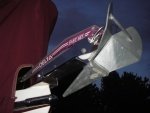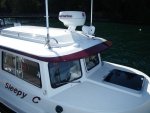PNW_Wesley
New member
- Joined
- Nov 28, 2019
- Messages
- 97
- Reaction score
- 0
- C Dory Year
- 2003
- C Dory Model
- 19 Angler
- Hull Identification Number
- CD019022C303
- Vessel Name
- Zenith
My new pivoting bow roller (Lewmar 66840007) will arrive next week. I will be installing it myself.
Other than using large washers below the deck, is it advisable to use some form of backing plate to reinforce the deck?
Zenith has a Maxwell HR6 windlass, and a 5 kg Bruce anchor.
Other than using large washers below the deck, is it advisable to use some form of backing plate to reinforce the deck?
Zenith has a Maxwell HR6 windlass, and a 5 kg Bruce anchor.



